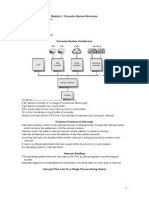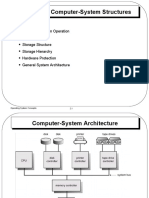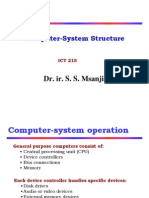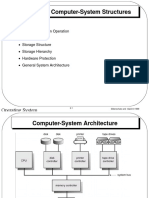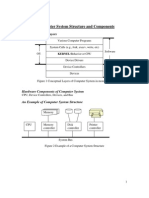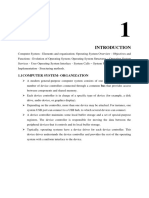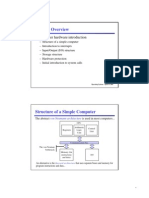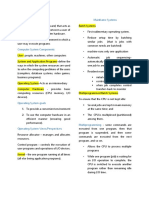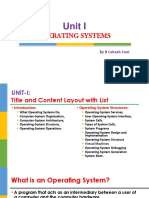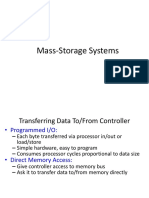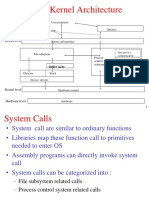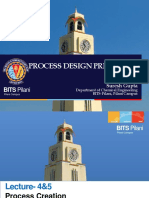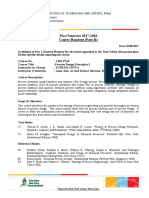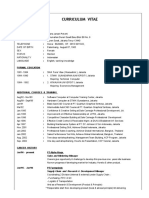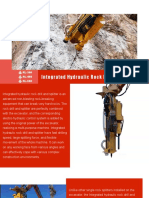0% found this document useful (0 votes)
682 views24 pagesComputer System Structure PDF
The document discusses computer system structures and operations. It describes how I/O devices can operate concurrently with the CPU, how device controllers manage local buffers, and how interrupts are used to signal completion of I/O operations. It also summarizes interrupt handling by the operating system, I/O methods, storage hierarchies including caching, and hardware protection mechanisms like dual-mode operation, memory protection, and timers.
Uploaded by
vidishsaCopyright
© © All Rights Reserved
We take content rights seriously. If you suspect this is your content, claim it here.
Available Formats
Download as PDF, TXT or read online on Scribd
0% found this document useful (0 votes)
682 views24 pagesComputer System Structure PDF
The document discusses computer system structures and operations. It describes how I/O devices can operate concurrently with the CPU, how device controllers manage local buffers, and how interrupts are used to signal completion of I/O operations. It also summarizes interrupt handling by the operating system, I/O methods, storage hierarchies including caching, and hardware protection mechanisms like dual-mode operation, memory protection, and timers.
Uploaded by
vidishsaCopyright
© © All Rights Reserved
We take content rights seriously. If you suspect this is your content, claim it here.
Available Formats
Download as PDF, TXT or read online on Scribd
/ 24


